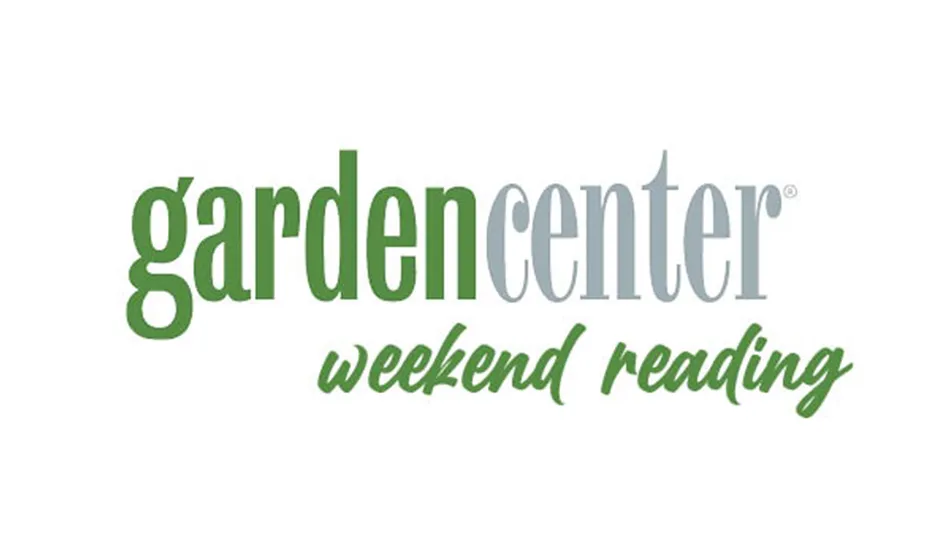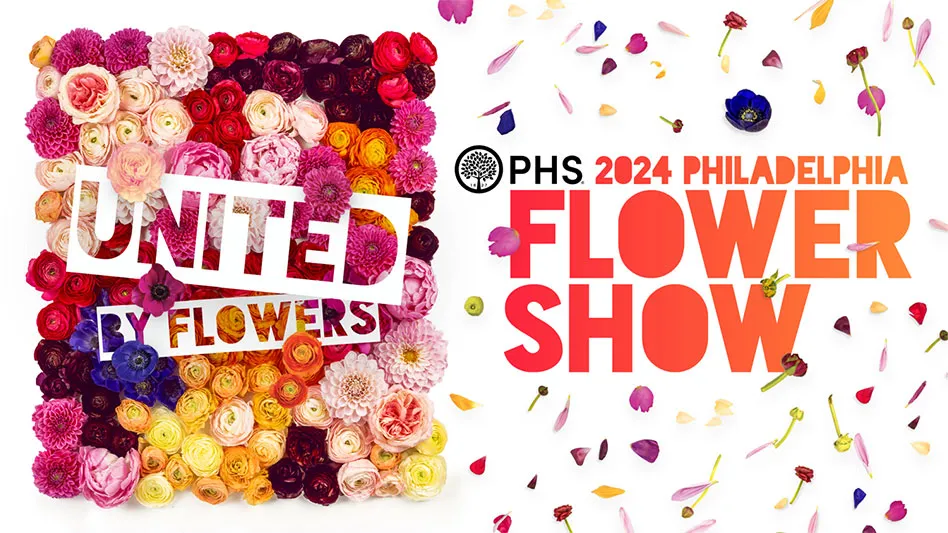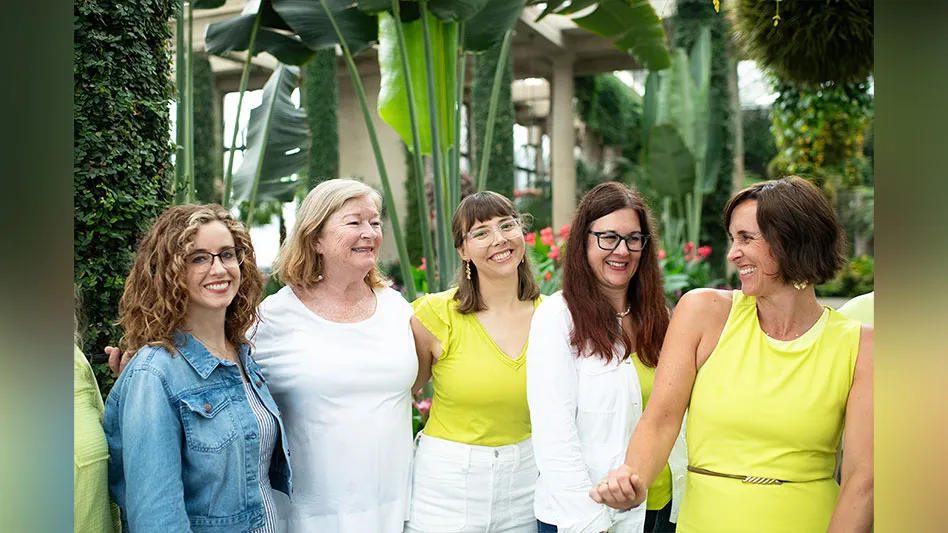
Photo courtesy of David Austin Roses
It is with great sadness that the Austin family announces the passing of David C. H. Austin Snr OBE VMH, rosarian and founder of David Austin Roses. David Snr died peacefully at his home in Shropshire on Tuesday, Dec. 18, 2018, surrounded by his family. He was 92.
From school boy to rose breeder
David Austin, whose English Roses have captured the imagination of gardeners and rose lovers worldwide, was born on Feb. 16, 1926.
Growing up in the Shropshire countryside, Austin developed a passion for plants from a very young age. However, his interest in flowers was truly ignited when he first discovered a magazine called Gardens Illustrated, tucked away in the school library. After being encouraged by his teacher, he decided to pursue his newfound passion.
James Baker, a friend of David’s father, ran a nursery down the road from their family farm. David would visit with his father and was dazzled by the new varieties of lupins that James was breeding. It was at this time that the idea of developing new varieties of plants himself really started to take hold. Coming from a farming background, David had an innate knowledge of plants but taking this knowledge and applying it to the less practical world of flowers did not meet his father’s approval. It wasn’t until his sister gave him A.E. Bunyard’s book, Old Garden Roses, for his 21st birthday, that he fell in love with roses.
First shoots
With his new passion for roses, David decided to take up rose growing as a hobby, ordering his first few plants when he was in his early twenties. Beguiled by their beauty, his interest only really lay with the Old Roses, but with the fashion at the time being for modern Hybrid Teas, he decided to order a few varieties to compare the two groups.
Although he wasn’t charmed by the Hybrid Teas he did recognize the attributes they possessed that the Old Roses lacked: a much wider color range and the ability to repeat flower. This was his light bulb moment, the realization that he had the opportunity to create something entirely new — a rose with the beauty and fragrance of his much-loved Old Roses but with the benefits of modern roses.
Growing pains
Resolute in purpose, David began the slow process of breeding this new type of rose. Unfortunately, his inexperience revealed itself when he lost his first set of seedlings to a fungal disease, and he had to start all over again the following year. However, with time and extraordinary dedication, David created his first rose, ‘Constance Spry’ (Ausfirst), in 1961. Industry professionals said nobody would buy these ‘old-fashioned roses’ and nurseries refused to stock them. Not one to be easily discouraged, David decided to ignore his detractors and sell his roses to the public himself, using his own kitchen table in Shropshire as his distribution center. He also sold a wide range of other roses, including Old Roses, climbers and ramblers.
Coming into bloom
By 1969 David had refined the breeding process and launched his first range of repeat-flowering ‘English Roses,’ the name he coined for his groundbreaking varieties that fused the old with the new. He reasoned that the French have the Gallica roses, the Scottish the Scots, so why shouldn’t the English also have a group of roses to call their own — especially with the rose being so intertwined in England’s culture and history.
The early years were quite a struggle, particularly because he was trying to compete with so many other rose nurseries. However, with the support of his wife Pat, combined with the unique combination of attributes his roses had to offer, the English Roses grew in popularity and the Old Rose style began to enjoy a long overdue renaissance.
In 1983 David experienced his first real breakthrough when he introduced three very good English Roses at the Chelsea Flower Show, including the rose named after his good friend and mentor, the revered horticulturist, Graham Thomas. The response from the press, as well as the general public, to Rosa ‘Graham Thomas’ (Ausmas) was overwhelming and David credited it with being the rose most responsible for the recognition and success of the English Roses. The following year saw the first of many gold medals at the RHS Chelsea Flower Show, and the David Austin garden gradually became one of the highlights for visitors, which continues to this day.
With the increased popularity, the nursery business started to grow, the extra income meaning that the rusty, draughty old barns could be replaced by modern packing sheds and the falling down breeding greenhouses replaced by bigger and more spacious ones, although still secondhand. The fledgling rose garden, now considered one of the most beautiful rose gardens in the world, also increased in size.
The art of rose breeding
The increased income also gave him the opportunity to gradually expand the size of his enduring passion, the rose breeding program, which today is one of the largest in the world. Each year David introduced three or so new varieties. From pollination to sale, the whole process of creating a new rose takes nine years. For each new rose released, roughly 120,000 unique roses will have been grown for research ? a process which took all of David’s patience, dedication and expertise.
“There is nothing more exciting than having 350,000 seedlings growing that no one has ever seen before,” David C. H. Austin once said.
His rose breeding endeavors have resulted in a number of awards, with one of his proudest achievements receiving his OBE in 2007 for his services to horticulture. On receiving the award, he said “Every day, I marvel at my good fortune to have been able to make a life out of breeding roses. My greatest satisfaction is to see the pleasure my roses give to gardeners and rose lovers around the world”. He was also awarded the Victoria Medal of Honour from the RHS, an honorary degree from the University of East London and the Dean Hole medal from the Royal National Rose Society. His roses too have won many awards around the world. ‘Graham Thomas’ (Ausmas) was voted the world’s favorite by the World Federation of Rose Societies (WFRS) in 2009 and ‘Gertrude Jekyll’ (Ausbord) twice voted the UK’s favorite. 28 of them have also been honored with the prestigious Award of Garden Merit from the RHS. The garden at Albrighton, both home to David Austin and the National Collection of his English Roses, received the Award of Garden Excellence from the WFRS in 2015.
Through the generations
In 1990 he welcomed his eldest son, David J. C. Austin, into the business. Together they have developed David Austin Roses into a worldwide business, extending the UK operation to Europe and in more recent years to the United States and Japan, where they now have offices.
Not one to rest on his laurels, in 1992, with the driving force and support of David Junior, he decided to start up a completely new side to the breeding program. The aim being to develop varieties that were specifically for the cut flower market, available all year round, whilst retaining the beauty, fragrance and charm that had become so recognizable in his garden roses. The first group of cut roses was released in 2004 and like his garden roses, it took some time for them to be accepted, being a very different proposition from the status quo. Today David Austin cut roses are considered to be some of the most prestigious and sought-after wedding and event roses in the world and have been used to celebrate the most intimate of private occasions through to the most prestigious Royal Weddings showcased on a global stage.
David Austin Roses has grown significantly over the decades but it still remains very much a family business at heart. The third generation, Richard Austin, David Senior’s grandson, and son of David Junior, joined the company in 2010 continuing his father and grandfather’s passion and their lives’ work. They in turn are supported by a loyal team, with many having been with the business for more than 15 years including his Rose Breeding Manager, Carl Bennett, who has worked for him for almost 30 years. As the company has grown, so too has the wider David Austin family who affectionately refer to David Senior simply as ‘Mr A.’
An author and poet
Apart from his passion for roses he had a great love for literature and his sitting room is lined with bookcases filled with a great variety of books. The first book he wrote was The Heritage of the Rose, published in 1988. In 1993 he published the first edition of The English Roses, the definitive work on his own creation, which won great critical acclaim around the world. He especially loved poetry and published a collection of his own poems in 2014 entitled The Breathing Earth, which draws on his life experiences and his love of nature.
The Father of English Roses
He will be remembered as one of the greatest rosarians and rose breeders of all time who is responsible for creating the world’s first horticultural brand. With over 240 varieties to his name, he was still absolutely passionate about developing new varieties of English Roses until the very end. He died already knowing what the future may hold, having planned and undertaken the next crosses, which will hopefully create a new rose that will be introduced in nine years’ time.
Despite continually discovering new found inspiration his dream, broadly speaking, remained the same as when he first started breeding roses as an amateur, all those years ago: to create the perfect garden worthy rose that combines beauty, fragrance, repeat-flowering ability and good disease resistance with great charm – the quality his English Roses are most renowned for. As he said in his book, The English Roses, he had one goal that was more important than any other, “… that we should strive to develop the rose’s beauty in flower, growth and leaf.” Of fragrance, he wrote, “[It] may be said to be the other half of the beauty of a rose.”
He leaves behind a legacy that very many around the world will treasure as a result of his passion, unwavering vision and lifetime’s work.
Latest from Garden Center
- Weekend Reading 5/17/24
- GardenComm 2024 Annual Conference registration is open
- Landmark Plastic celebrates 40 years
- Proven Winners introduces more than 100 new varieties for 2025
- Weekend Reading 5/10/24
- The Family Business, Part 2: Agreeing (and disagreeing) on capital investments
- Registration opens for Darwin Perennials Day
- Weekend Reading 5/3/24





